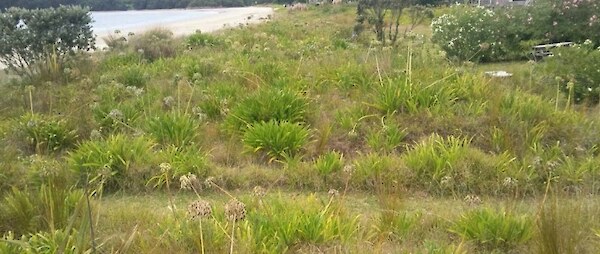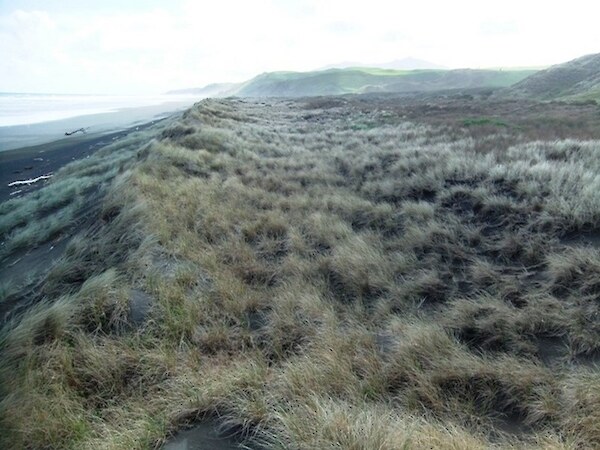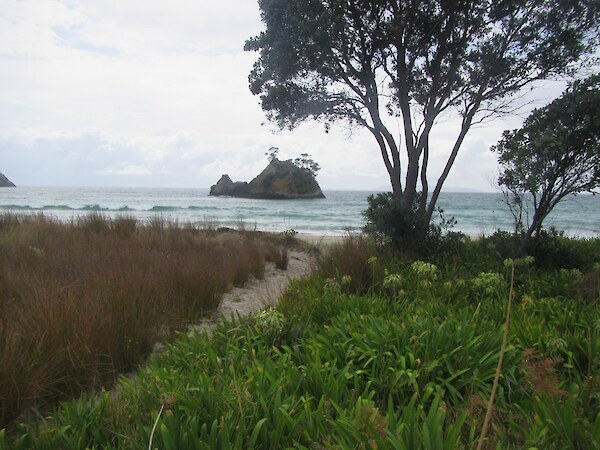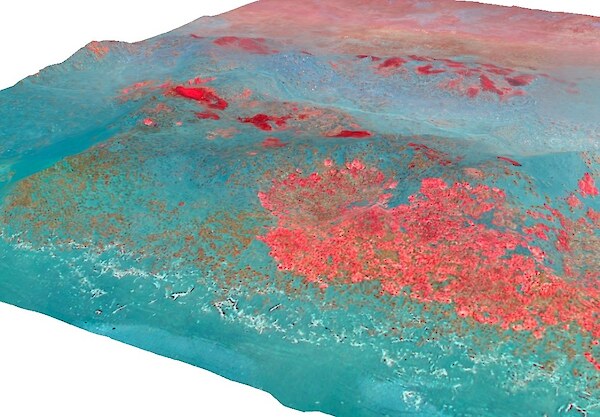Providing a blueprint for community-based restoration of difficult sand dune sites
The Coastal Restoration Trust has successfully secured funding from the Department of Conservation’s Community Conservation Partnerships Fund in a project that aims to work with local communities and landowners in the Waikato Region to restore severely degraded coastal dunes at difficult sites on both the east and west coasts.
Over the last two decades, significant progress has been made with restoration of degraded sand dunes using community based approaches. However, work has tended to focus on restoration of the more seaward pioneer vegetation (i.e. the spinifex and pingao zone). Achieving and sustaining backdune restoration has been less successful, particularly at severely degraded and difficult sites.
With the support of Sam Stephens, Coastal Site Restoration Advisor of the Waikato Regional Council, this project focuses on:
- Restoration of frontal and backdune environments on two severely degraded dunes on difficult, exposed, high energy dynamic west coast sites. One site is a large farm where stock access has led to serious degradation and wind erosion, with extensive mobile sand areas. The second site is a private camping ground where the natural dunes have been levelled, filled and grassed, with the adjacent shoreline presently experiencing severe wave erosion. The sites are typical of many difficult sites around New Zealand
- Restoration of two severely degraded weed-dominated backdune sites on the east coast of the Coromandel. The sites, dominated by a wide range of dense garden weeds (agapanthus, arctotis, exotic ice plant, various exotic succulents, etc…) are typical of degraded backdune environments at most developed coastal settlements around New Zealand. In addition, the projects will focus on working with adjacent private landowners who are essential in the successful restoration of these areas for a wide range of reasons.
- Production of a “best practice” guide for restoration of difficult sites based on these projects and other knowledge gained around New Zealand. These will provide detailed guidelines on all elements relevant to successful restoration of difficult sites, including landowner involvement, site preparation, species selection, implementation, monitoring, maintenance and costs.

Examples of difficult sites for restoration of indigenous biodiversity in the Waikato  region that will be amongst the sites used to develop best practice guidelines – weed infested Cooks Beach, eastern Coromandel (top) and exposed dynamic dunes near Ruapuke, west coast (bottom).
region that will be amongst the sites used to develop best practice guidelines – weed infested Cooks Beach, eastern Coromandel (top) and exposed dynamic dunes near Ruapuke, west coast (bottom).
The project will run over the next three years and deliver four “flagship” examples and detailed best practice guidelines to actively encourage and guide transformative dune restoration at similar difficult sites around New Zealand. For more information on this project please contact Coastal Restoration Trust Project Manager Jim Dahm ([Enable JavaScript to view protected content]).
Development of a literature/reference database to store and maintain coastal dune ecosystem information
We are about half way through this project funded by the Terrestrial and Freshwater Biodiversity Information System (TFBIS) Programme which is funded to improve the conservation of New Zealand’s indigenous biodiversity by increasing awareness of, and access to, fundamental data and information about biota and biodiversity. The Department of Conservation administers the TFBIS Programme, on behalf of all agencies and organisations that contribute to the management of New Zealand’s indigenous biodiversity.
In the development of a reference database on coastal dune restoration and management we are now planning the design and build of a database system that can be accessed by those interested in sourcing these references via the Coastal Restoration Trust website with links to other websites of collaborating agencies and interest groups. The aim is to develop an easy-to-use search engine system for those wanting access to historical and latest information relevant to coastal dune restoration, including Coast Care groups, council and government department staff, students and the general public.
Over 2000 references and links have been collated to date involving interrogation of various sources for the existence and location of pdf copies or physical copies held by various agencies and individuals, including the Coastal Restoration Trust, trustees and their organisations, selected consultants, councils and coast care groups involved in the project to date. Hard copies have been scanned as necessary and entered into a primary database.
It is planned to have the coastal reference database available on the Coastal Restoration Trust website by mid-2015. For more information on this project please contact Coastal Restoration Trust Project Manager Justin Cope ([Enable JavaScript to view protected content]) or Coastal Restoration Trust trustee David Bergin ([Enable JavaScript to view protected content]).
This update provided by David Bergin
 planted recently following physical earthworks. This involved the use of machinery to remove the predominantly exotic vegetation cover, comprising species such as agapanthus, yucca, and blackberry, as well as the top layer of sand (with the weed seedbank). Replanting was done using spinifex and pingao on the foredune, with wiwi and pōhuehue further back.
planted recently following physical earthworks. This involved the use of machinery to remove the predominantly exotic vegetation cover, comprising species such as agapanthus, yucca, and blackberry, as well as the top layer of sand (with the weed seedbank). Replanting was done using spinifex and pingao on the foredune, with wiwi and pōhuehue further back.






